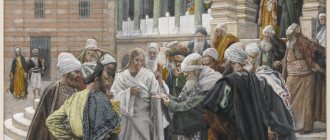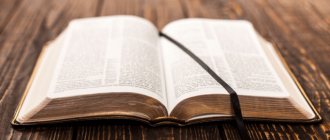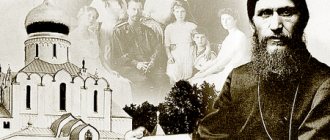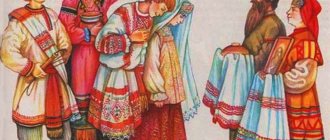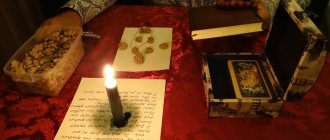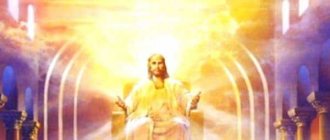The attitude of Orthodoxy to science
The Orthodox Church does not have a negative attitude against material teachings. Yes, she believes that Christian knowledge of truth and scientific justification for the appearance of the world are false. But also, any knowledge is perceived as the discovery of a Divine miracle before a person; teaching is capable of strengthening human faith through research.
About some scientific theories:
- UFOs and life beyond Earth
- Orthodoxy about dinosaurs
- About telegony
Religion and science in the modern world
Knowledge cannot be superfluous, religion and science go hand in hand and their cooperation in the modern world is growing stronger every day.
Orthodoxy has a negative attitude towards some aspects of modern science:
- any scientific discovery is presented to people without reference to faith and God, and many scientists believe that religion and science are two completely separate areas of activity;
- a person’s soul and spirit are in one copy, and they equally accept both knowledge and faith, passing through themselves, respectively, in this these two areas are one;
- people who devote themselves completely to physics, mathematics and other fields, thinking that their life is filled with meaning thanks to this activity, are mistaken and their soul often turns out to be empty without Divine truth.
Important! A person’s inclination towards knowledge, reflection and certain areas of study is a gift from God, therefore Orthodoxy and science are inseparable from each other.
Saint Innocent (Veniaminov), Metropolitan of Moscow and Kolomna (1797-1879)
Educator of the peoples of Northeast Asia. Outstanding linguist, ethnographer and folklorist. Served as a missionary in Alaska
28 years (since 1840 - Bishop of Kamchatka, Kuril and Aleutian). He spent seven years in Yakutsk, engaged in both active Christian education and scientific work. He compiled the first grammar of the Aleutian language and compiled a dictionary. He created the Aleut script based on the Cyrillic alphabet and achieved an extraordinary spread of literacy among the local population. He left numerous works on linguistics, ethnography, anthropology, geography, hydrography, and meteorology. Translated the service into Aleutian and Yakut languages. On January 5, 1868, Innocent was appointed Metropolitan of Moscow and Kolomna, rector of the Trinity-Sergius Lavra.
For his scientific achievements, priest Veniaminov was elected a corresponding member of the Russian Academy of Sciences and an honorary member of the Imperial Russian Geographical Society. He died in 1879 and was buried in the Trinity-Sergius Lavra. Canonized by the Russian Orthodox Church.
An Orthodox person's view of science and religion
Science has long become an important component of human life. Some results of technological development have turned out to be negative for the planet and people in general, for example, the environmental crisis that humanity is currently struggling with.
Attention! The Orthodox Church does not prohibit people from engaging in teaching, but it believes that all science should be limited by moral and religious principles.
This opinion is explained by the fact that free science ends up in the hands of people obsessed with their passions, who crave money, comfort, and vanity. All this corrupts human life and soul, alienates man from God. In the 20th century, the doctrine rose sharply; today, technical achievements are very great and not all of them were used for the benefit of people.
How does the church view scientific discoveries?
Scientific knowledge and Orthodox knowledge are different things, so they cannot oppose each other a priori. Spiritual knowledge expands the worldview, develops character in a person, and does not explore matter, therefore it can only be similar to philosophy.
The Orthodox religion and scientific activity must be united and exist in the name of creation, not destruction. A person cannot use the acquired religious knowledge for evil purposes, but scientific discoveries can take a life.
Recently, the previously existing conflict between religion and science has noticeably subsided; scientists have become more loyal to the Divine world and spiritual life in general. Scientists are also people with their own goals and thoughts, and many of them are ready to serve political or economic ideas that benefit from denying religious knowledge.
An Orthodox person exists for the sake of the highest goal - the search for God's truth and righteousness, in which scientific knowledge can help him. Therefore, cooperation is necessary, and the conflict between the parties is far-fetched and inflated from scratch; the term materialism itself was invented precisely in a conflicting state.
Over time, science and religion in Russia will learn to cooperate and help each other to achieve the next goal - safe and righteous living conditions for humans.
Important! Technical discoveries should serve only for the benefit of man, without destroying nature and spiritual life.
The media of Catholic Europe are now increasingly discussing how certain methods of work in science are consistent with the religious vision of the world.
Prague Library, built in 1622
Some scientific works can be very interesting from the point of view of faith, for example, long-term studies of the Shroud of Turin have revealed the following facts:
- the body was on it for no more than 40 hours;
- the image of the Lord on the shroud was not applied to it before the body was placed there, since under the traces of blood on the fabric, the outline of Christ was not visible, it was proven that the image appeared towards the end;
- blood stopped coming out 20 hours after the body hit the tissue.
In other words, science has proven and told about the Lord's last hours on earth. Such knowledge is positive for a person’s spiritual life; it reinforces faith. This is an example of how teaching can act in the interests of religion.
More about Orthodox miracles:
- Zoino's standing
- Barnaul miracle of Claudia Ustyuzhanina
- Lanchang Miracle
Abbess Seraphima (Black) (1914-1999)
In the world - Varvara Vasilievna Chernaya. Granddaughter of the hieromartyr Metropolitan Seraphim (Chichagov), who was executed in 1937. She studied at the Institute of Fine Chemical Technology named after M.V. Lomonosov, worked as a laboratory assistant at the Military Chemical Academy, and then at the Institute of Organic Chemistry of the USSR Academy of Sciences. In 1939 she graduated from the institute and headed the central laboratory at. In 1946, she left the factory to devote herself entirely to scientific activities. In 1951 she defended her candidate's dissertation, ten years later she defended her doctoral dissertation and received a professorship. She worked at the Institute of Rubber Industry, the object of her scientific interest was synthetic rubber. The author of numerous publications that made her a world-famous scientist. Laureate of the State Prize. She took part in the development of the spacesuit in which Gagarin made his first space flight.
At the same time, she was a deeply religious person. She worked behind a candle box in the Church of Ilya the Ordinary on Ostozhenka. Few of those who bought candles from her knew that they were taking them from the hands of an honorary member of many academies around the world.
In 1994, she took monastic vows with the name Seraphim, became the first resident of the restored Novodevichy Convent in Moscow, and subsequently - abbess.
Nun Ignatia (Puzik) (1903-2004)
In the world - Valentina Ilyinichna Puzik. Professor, specialist in pathomorphology of tuberculosis. She was a nun in the world, a church writer. Her spiritual achievement began when in 1924 she came to the Vysoko-Petrovsky Monastery and “accidentally” went to confession with the elder hieromonk Agathon (later the Venerable Martyr Ignatius (Lebedev)). Valentina Ilyinichna graduated from Moscow State University and in 1928 took secret tonsure with the name Ignatius, receiving obedience: to read services every day and not give up research activities.
The problem of combating tuberculosis was very acute in the 30s, 40s, and 50s, and therefore the NKVD authorities turned a blind eye to the “churchiness” of the outstanding scientist. Thanks to research at the Institute of Tuberculosis, where my mother worked, the medicine PASK was invented, and tuberculosis became curable.
At the end of the 1970s, Mother completed her professional activities and took up hymnography, published in the Alpha and Omega magazine, and wrote books about the elders of our days.
Giordano Bruno
The teachings of Copernicus were developed by other outstanding scientists. Among them was the great Italian thinker, a courageous fighter against the church, Giordano Bruno (1548-1600) . Bruno was born into a poor family. He was distinguished by outstanding abilities, studied tirelessly, read a lot, and even in his youth became one of the most educated people in Europe. And the more extensive Bruno’s knowledge became, the more doubt ripened in him about the correctness of church teaching. After reading the book of Copernicus, Bruno finally came to the conclusion that God does not exist. They began to pursue him. Bruno had to flee Italy. He wandered for a long time in foreign lands - in Switzerland, France, England, Germany. At universities in these countries, he gave lectures in which he expressed his bold ideas.
Copernicus proved that the Earth is not the center of the Universe, and Giordano Bruno taught that the Sun is not the center of the Universe . The universe has no center, no beginning, no end, Bruno said. It is infinite and eternal; it is filled with countless worlds similar to ours. The sun is just one of the stars we see in the sky. And around these many stars the same planets as our Earth revolve.
But if the Universe is infinite and filled with moving celestial bodies, then where is the motionless sky invented by the church, on which “God” supposedly lives? And if the Universe is eternal, then no “god” created it? This is how Bruno refuted religious speculation.
Giordano Bruno was a great atheist (atheist) scientist. Young people listened with ardent enthusiasm to the bright and passionate lectures of the great Italian thinker. And the church obscurantists, both Catholic and Protestant, hated and persecuted him.
The Papal Inquisition, with the help of the Jesuits, lured Bruno to Italy and captured him here. Giordano Bruno spent seven years in prison. They tried to force him to renounce his views through persuasion, intimidation, and torture. But it was all in vain, and Giordano Bruno was burned at the stake. “You pronounce your sentence with more fear than I listen to it ,” Bruno said to the executioners.
Archpriest Gleb Kaleda (1921-1994)
Professor, Doctor of Geological Sciences, archpriest, author of many books and scientific publications. His theological works include articles on apologetics, Orthodox upbringing and education. During the Great Patriotic War, Gleb Kaleda was a radio operator and a private in the missile forces. In 1972, G. A. Kaleda was secretly ordained to the priesthood.
He served in the Vysoko-Petrovsky Monastery, headed a sector in the department of religious education and catechesis. Father Gleb became the first priest in the restored church of the Butyrka prison. Until his last days he actively participated in the life of the Church.
He was one of the founders of the Catechetical Courses, which were later transformed into the St. Tikhon’s Orthodox Theological Institute.
Saint Luke (Voino-Yasenetsky) (1877-1961)
In the world - Valentin Feliksovich Voino-Yasenetsky. Surgeon, Doctor of Medicine. Until 1917, he was a physician in a number of zemstvo hospitals in central Russia; later, he was the chief physician of the Tashkent City Hospital and a professor at the Central Asian State University. In the early twenties, under the name of Luke, he took monastic vows and was ordained a bishop. He was repeatedly subjected to arrests and administrative exile.
Author of 55 scientific works on surgery and anatomy, as well as ten volumes of sermons. His most famous book is “Purulent Surgery,” which went through three editions (1934, 1946, 1956). Elected an honorary member of the Moscow Theological Academy in the city of Zagorsk (now Sergiev Posad).
For the books “Purulent Surgery” and “Late Resections for Gunshot Wounds of the Joints” (1946) he was awarded the Stalin Prize of the first degree. Saint Luke died in the rank of Archbishop of Crimea and Simferopol. Canonized by the Russian Orthodox Church.
